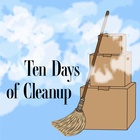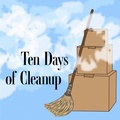While many post-World War II Japanese families were all about discarding old tansu and kimono, my mother closely held to the value of mottainai, that it was a disgrace to throw something away before its time. In other words, as long as an object had not completely disintegrated, she was against throwing it away.
We were from a small town, Minamiawaji, on Awaji island in Hyōgo prefecture. Our family house was an old wood-framed structure that should have been torn down years ago because of termites and its exposure to the elements. But my parents continued to live there, along with all the material objects from my Taisho Era grandparents. Zabuton and futon were crammed into all the storage places. We owned countless kokeshi dolls and ningyo in glass cases.
I hated living in such a place that had no breathing space. It was ironic because shibui, or the appreciation of simplicity, was considered such a Japanese aesthetic, but in our home and neighbors’ houses, I rarely saw this cultural value being practiced.
As a result, whenever I got a chance, when my mother was away at the grocery store, I would start to do souji, clean. Or in other words, throw as many things away in an hour’s time. I would stuff everything I could in a plastic trash bag and hide the rubbish on the side of our house. When it was trash day, I would wake up early and deposit my trash bags down the street and rush home, hoping not to be discovered.
This sensibility would form the foundation of my Southern California-based business, Souji RS. All my clients came to me because they thought Japan was sleek and shibui. Little did they know that our homes back in Japan were crammed with knickknacks. Back in Japan we always socialized with friends in bars and restaurants because no one wanted to let anyone into our homes.
My American business made me feel in control. That I could in essence erase parts of my past. It was easier since I lived in California now, thousands of miles away from Minamiawaji. But just when my birth country past started to fade from my memory, my parents would mail me albums filled with old photographs of my childhood. What in the world would I do with them?
This was all before the pandemic. My repositories for my rubbish—thrift stores—were largely closed. And I had taken on the worst client ever—a man, Ryan Stone, or whatever his real name was—and his storage unit, filled from top to bottom with items wrapped in paper.
The thing was, there was some order to the chaos. For instance, in the front of the storage unit were bundles in orange paper.
Since I was so devoted to order, I couldn’t help but to take out all the orange packages and unwrap them.
There were photo albums with black-and-white prints all displayed with photo corners on acid-free black pages. The subjects were all Asian men, women, and children posed in front of barracks. Judging from their clothing and hairstyles, the photos were taken in the 1940s. Although I had not come to America until the late 1990s, I had spent enough time with Japanese Americans to know that the albums documented the World War II camp experience in America.
In addition to the albums, there was a wood name plate in kanji.
I had a former client, Clement, who worked at the local Japanese American museum. I had disinfected his car after his husky had gotten sick during a drive to UCLA. I still had his e-mail address and sent him a photo of the name plate and some select photos from the album.
Clement immediately called me back. “Oh, that looks like a wooden name plate that they carved in camp. And those photos are definitely from camp. It looks like Amache. That was in Colorado.”
“You can tell that all from a photo?”
“Their structures were unique. And the floors inside of the barracks were brick over dirt floors without any mortaring.”
I couldn’t imagine how these Japanese Americans survived living in such a place.
“And in terms of the kanji, you would be better at reading the name than I would.”
“The name can be read Kaneshiro. But also Kinjo or even Kanashiro, too. Okinawan.”
“There’s a Kinjo I know who lives in a retirement home in Boyle Heights. Let me check if any of this is connected to him.”
“Clement, I’m in a hurry. Like I have to get rid of these things by tomorrow at the latest.”
“Tomorrow? Well, I’ll get back to you as soon as possible. One thing with the pandemic, a lot of us are just sitting at home.”
© 2021 Naomi Hirahara





